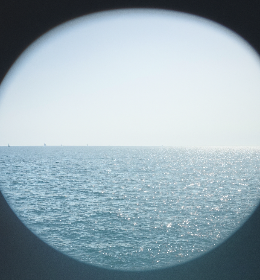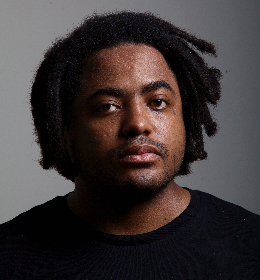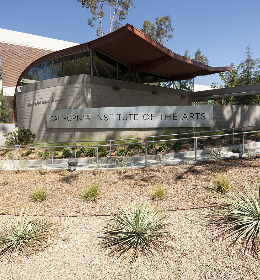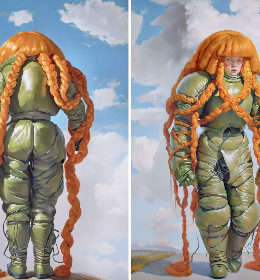Born in Paris, 1992, Estelle Vétois now lives and works in Metz. In a photo album found at a flea market, which recounted the career of a cameraman at the ORTF (Office of French Television Broadcasting), Vétois discovered the image that inspired Crash Test. She explains, “all my work is underpinned by the critical analysis of the news media for which this cameraman was employed at the time.”
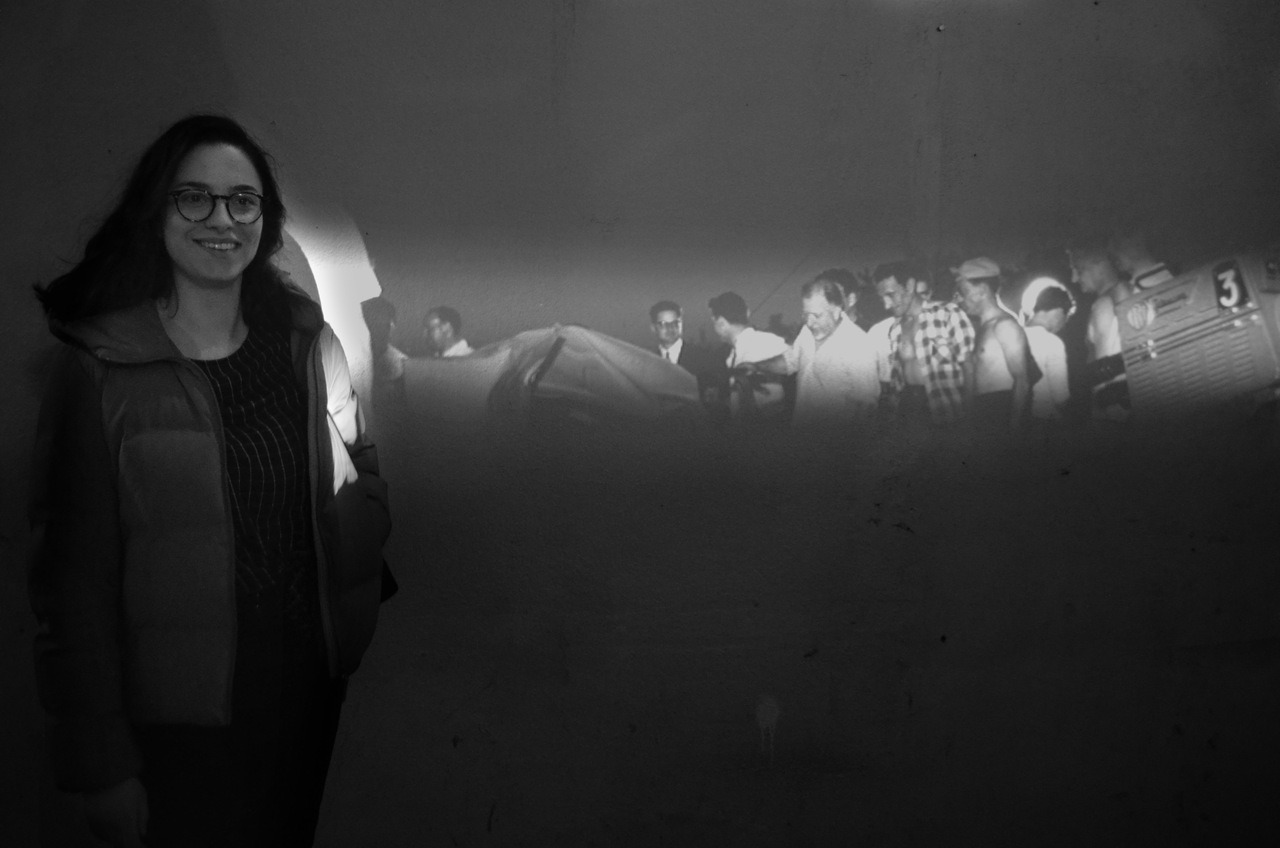
Estelle Vétois
Installed in both a hallway and the basement projection theatre of the Prep-Art School, the work’s two viewing contexts create multiple effects on the spectator. A black and white image is projected in sequential parts, but its movement is a horizontal scan illuminating striped sections one at a time; the viewer must reconstruct the image through memory. “I question the limits of the optical tool. Black and white was one of the original technical limits of both photography and video that technology has overcome. Technical constraints act as rules to create out from: restricted frames, stillness, bi-dimensionality, pixels, etc. Exploring these different frontiers to reveal the construction of the image is the foundation of my work and allows me to question where the threshold of readability lies,” explains Vétois.
Our instinctive human curiosity is activated in Crash Test, a “device which is undoubtedly activated by the regard of the viewer. It is a different experience according to our cultural references, our memory or even our level of concentration at the time,” says Vétois.
The shape of the revealed images is consistent with a lighthouse lamp: a central strip of brightness with the top and bottom fading into a darker ‘field of uncertainty.’ One might draw a parallel here with the field of uncertainty within Vétois’ artistic practice, where she undefines and re-contextualizes the lines between photography and video, the two terms a merged phenomenon. In addition to a fixed installation, the work is presented as a looped display in the basement along with works by other video artists, thus insisting on the viewer’s role in contextualizing the work through witnessing the dual presentations. The crucial element of a fixed wall installation is upended by the concept of time introduced by the looped video presentation in the basement theatre; what we think we understand about the work is challenged and redistributed.
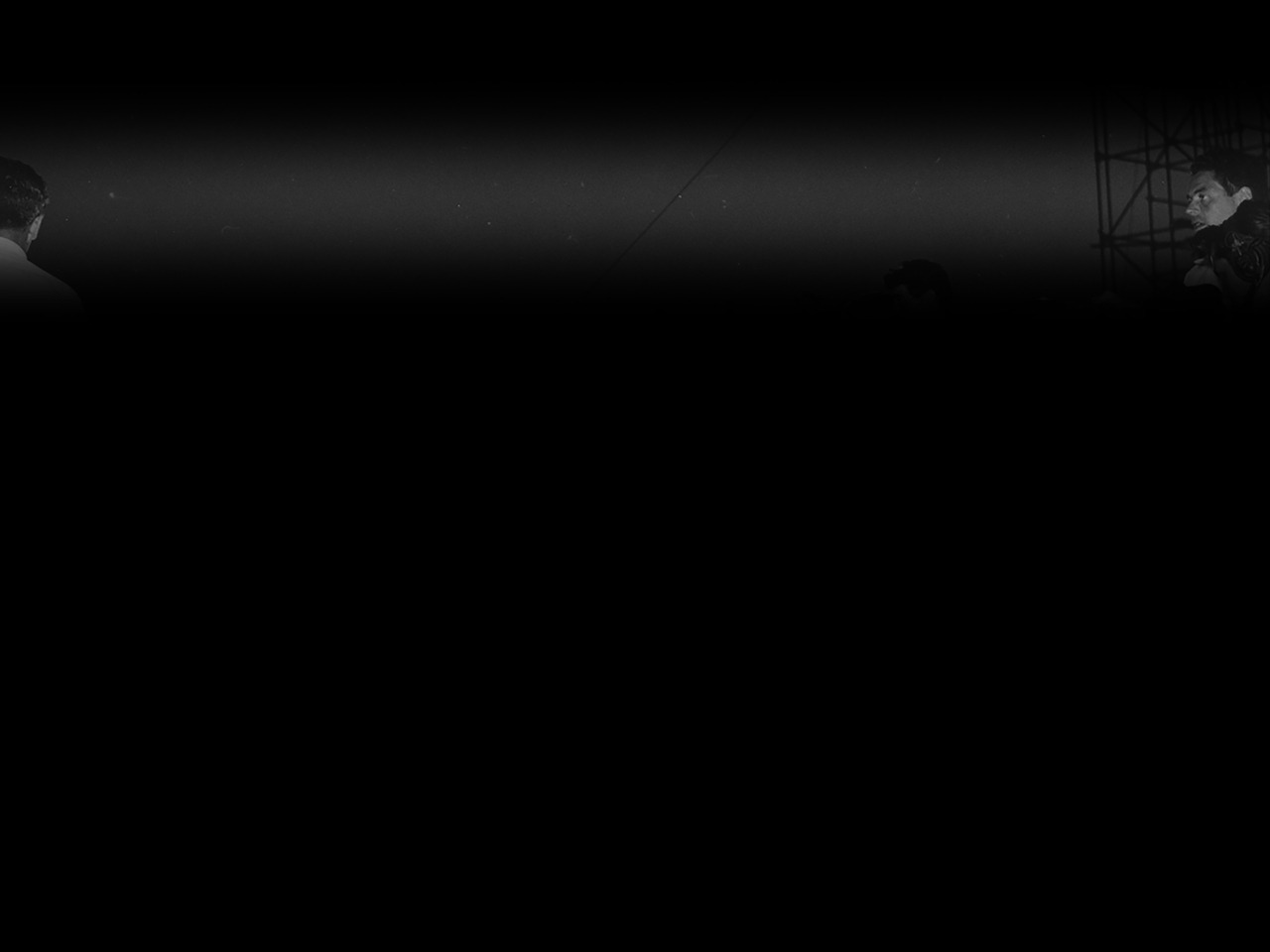
Crash Test
“To tell the truth, I no longer distinguish between photographic and video images. They are part of the same family of the recorded image. Or at least I use one to interrogate the other. I make photography from video and video from photography," reiterates Vétois. In Crash Test, the two mediums become intrinsically linked as two parts of a binary code, not unlike how Vétois describes her use of black and white: “It allows me to simplify and amplify the duality between what one shows and what one hides, the white referring to the luminous information and the black to its absence. Black is therefore the silence of the numerical code; white is maximal expression. I like this idea of tension, struggle, the burst of light from and against the darkness through all the shades of grey in this battle.”
Indeed, the need for white necessitates the black - the image emerges from darkness, one is reliant on the other, defines the other. Two elements are integrally related and yet incite an eerie mysticism, akin to the music of Max Richter, where the laws of physics, memory, and matter itself might in an instant be redefined and smashed, a crash-test of possibilities and results, just as truth is redefined in postmodernism. “If two such physical theories or models accurately predict the same events, one cannot be said to be more real than the other; rather, we are free to use whichever model is most convenient.” (p.7, The Grand Design, Stephen Hawking and Leonard Mlodinow). This statement sets up a structure for Vétois’ work in the context of quantum physics, where time and space are considered as multi-dimensional with coexisting realities.
“Photography is used as an objective tool in the media (especially television news). We say, "here is the real", but it is in fact a construction of the real because the image is limited (frame, point of view, etc.) and, as a result of choices made by the camera operators, is therefore subjective. What interested me in the images of the photo album that I found is that they redirect the eye and show what is usually hidden: cameramen with their camera = the construction device of the media image,” Vétois explains. It is precisely this element, the direct display of the device of construction which attracted Vétois to the photo she used for Crash Test.
More of Vétois’ work will be on show at the upcoming group exhibition, “FUGITIF”, which opens May 2 at Gallery 0.15, Metz, France.





